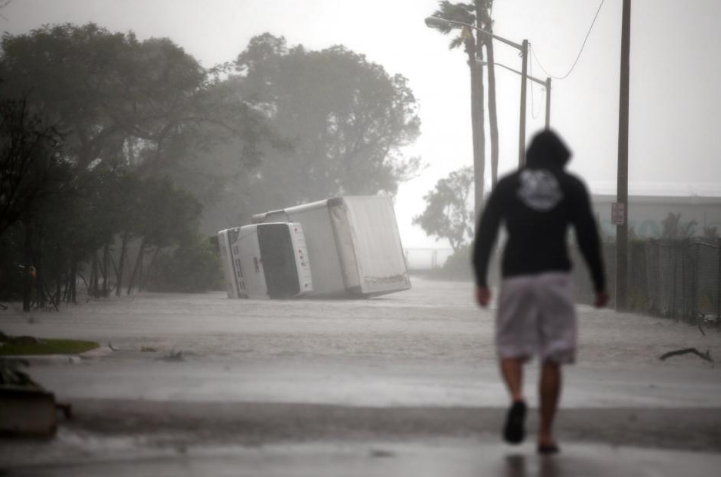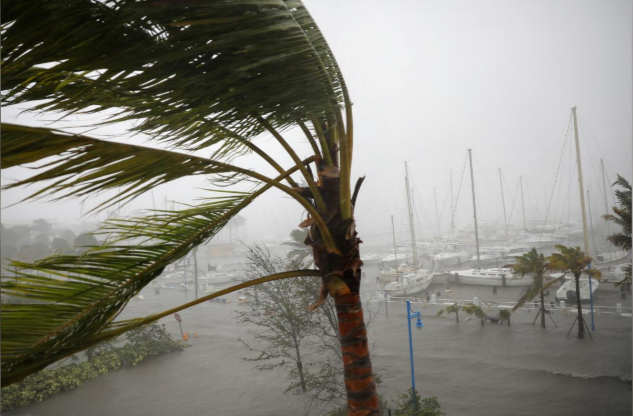Now Irma batters Florida: Churches provide shelter and care
Hurricane Irma pounded heavily populated areas of central Florida on Monday as it carved through the state with high winds, storm surges and torrential rains that left millions without power, ripped roofs off homes and flooded city streets.
Irma, as one of the most powerful hurricanes recorded in the Atlantic, came ashore in Florida on Sunday and battered towns as it worked its way up the state.

The storm gradually lost strength, weakening to a Category 1 hurricane by 2 am ET (0600 GMT) on Monday, the National Hurricane Center said. By 5 am ET (0900 GMT), Irma was churning northwest in the centre of the state and was about 60 miles (100 km) north of Tampa, with maximum sustained winds of near 75 miles per hour (120 km per hour.)
Churches have been responding to the disaster, with many open as temporary shelters for people seeking refuge. One, Christ Chapel in Cochran, Georgia, has transformed its classrooms into temporary bedrooms for evacuees, with a total of 11 people being housed and fed there. Other living in nearby hotels come in and eat there. According to 41WMGT.com, one family said they were sleeping in their cars in a Walmart parking lot before finding out about the church opening its doors. 'It was nothing short of a miracle, we got everything that we could ever possibly ask for here,' the Cafasso family said. They evacuated from Florida on Thursday.
The church's pastor Richard Hulsey said: 'It's almost been like a family reunion, a homecoming type thing where race and state, none of that matters, it's just us as humans just doing the best we can for one another.'
Meanwhile church-based relief and disaster recovery organisations also sprang into action. The Southern Baptist Disaster Relief (SBDR) organisation, already stretched because of the previous Hurricane Harvey that devastated parts of Texas late last month, was gearing up to help victims of Irma. In a release yesterday it said it had identified several churches that could be used as shelters and disaster relief staging centres after the storm has passed and attempted to move as much equipment as possible to safe locations.

SBDR said: 'We are asking that all SBDR teams east of the Mississippi River be on standby to serve in Florida, Georgia and other areas impacted by Irma. The Florida Baptist Convention has significant disaster relief resources, but many of their volunteers have been evacuated and will be focused on helping their own families recover for the foreseeable future.'
Across the state services were cancelled yesterday. The Catholic Archdiocese of Miami announced yesterday that all parish Masses and activities were suspended: 'Due to the emergency, and for their safety, Archbishop Thomas Wenski has dispensed the faithful from their obligation to attend Mass this weekend.'
A large area of the state's east and west coasts remained vulnerable to storm surges, when hurricanes push ocean water dangerously over normal levels. That risk extended to the coast of Georgia and parts of South Carolina.
Damage appeared to be severe in the Florida Keys, where Irma first came ashore in the state as a Category 4 hurricane with sustained winds of up to 130 mph (215 kph) in the early hours of Sunday.
Early on Monday, Irma brought gusts of up to 100 mph (160 kph) and torrential rain to areas around Orlando, one of the most popular areas for tourism in Florida because of its cluster of theme parks, the National Weather Service said.
In Daytona Beach, a city on the east coast about 55 miles (90 km) northeast of Orlando, city streets were flooded and emergency authorities carried out several water rescues, the Daytona Beach Police Department said on its Twitter feed.
On Sunday, Irma claimed its first US fatality – a man found dead in a pickup truck that had crashed into a tree in high winds in the town of Marathon, in the Florida Keys, local officials said.
The storm killed at least 28 people as it raged westward through the Caribbean en route to Florida, devastating several small islands, and grazing Puerto Rico, the Dominican Republic and Haiti before pummelling parts of Cuba's north coast with 36-foot-tall waves.
Its ferocity as it bore down on hurricane-prone Florida prompted one of the largest evacuations in U.S. history.
Some 6.5 million people, about a third of the state's population, had been ordered to evacuate southern Florida to shelters, hotels or relatives in safer areas.
High winds snapped power lines and left about 5.8 million Florida homes and businesses without power, data from the state showed
Many of the evacuation orders extended until at least Monday due in part to flooding, massive power outages and downed electric lines, leaving residents unable to return to their homes to survey any damage.
Irma was forecast to weaken to a tropical storm as it moved near Florida's northwestern coast on Monday morning, the National Hurricane Center said. It would cross the eastern Florida Panhandle and move into southern Georgia later in the day, dumping as much as 16 inches (41 cms) of rain, it said.
Police in Miami-Dade County said they had made 29 arrests for looting and burglary.
Irma, which hit just days after the Houston area was deluged by unprecedented flooding in Texas from Hurricane Harvey, was expected to cause billions of dollars in damage to the third-most-populous US state.
Additional reporting by Reuters.











